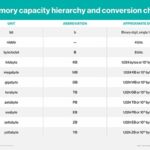The Japanese yen has plummeted to its lowest level against the US dollar in decades, sparking concerns about the health of the Japanese economy and prompting speculation of government intervention. This article explores the reasons behind the yen’s decline, its impact on the Japanese economy, and potential solutions.
Yen’s Decline Against the Dollar: A Historical Perspective
The yen recently fell to a low of 160.17 against the dollar, a level not seen since April 1990. While the currency has seen some recovery, it remains significantly weaker than it was just a few years ago. This decline is part of a larger trend that began in early 2021, with the yen losing over one-third of its value. The current exchange rate represents a return to levels seen after the collapse of Japan’s asset bubble in the early 1990s.
The Interest Rate Differential: A Key Driver of Yen Weakness
A primary factor driving the yen’s decline is the significant difference in interest rates between Japan and the United States. The US Federal Reserve’s benchmark interest rate is currently 5.25-5.50 percent, while the Bank of Japan (BOJ) maintains a rate of just 0-0.1 percent. This disparity makes US investments more attractive to investors seeking higher returns, leading to increased demand for the dollar and a corresponding decrease in demand for the yen. Market expectations regarding future Fed monetary policy also play a role.
Inflationary Pressures and Divergent Monetary Policies
The contrasting interest rate policies reflect different inflationary environments. The US grapples with high inflation and robust economic growth, necessitating higher interest rates to cool the economy. Conversely, Japan has long struggled with deflation and sluggish economic growth, leading the BOJ to maintain ultra-low interest rates to stimulate economic activity. This divergence in monetary policy further exacerbates the yen’s weakness.
Economic Impacts of a Weak Yen: A Double-Edged Sword
The weak yen presents both advantages and disadvantages for the Japanese economy. While it benefits exporters by making their goods cheaper overseas and boosts tourism by attracting foreign visitors, it also significantly increases the cost of imported goods like food and fuel, impacting household budgets. Furthermore, the benefits to exporters are mitigated by the fact that many Japanese companies conduct significant operations abroad.
Government Intervention and Future Outlook
Japanese officials have voiced concerns about the yen’s depreciation and hinted at potential intervention. This could involve buying up yen in the currency market or raising interest rates. While there was speculation of intervention following a recent surge in the yen’s value, authorities have not confirmed any action. However, given the persistent interest rate differential and the BOJ’s commitment to its loose monetary policy, significant yen strengthening seems unlikely in the near term. Previous interventions have proven costly and ineffective in altering the long-term trend. Experts predict continued yen weakness unless the BOJ adopts a more hawkish stance or the Fed signals significant rate cuts, neither of which appears probable in the short term.
Conclusion
The Japanese yen’s weakness against the US dollar is a complex issue driven by a confluence of factors, primarily the significant interest rate differential between the two countries. While a weak yen offers some economic benefits, its negative impacts on import costs and household budgets raise concerns. Government intervention may provide temporary relief, but a sustained strengthening of the yen likely hinges on shifts in monetary policy in either Japan or the United States.
